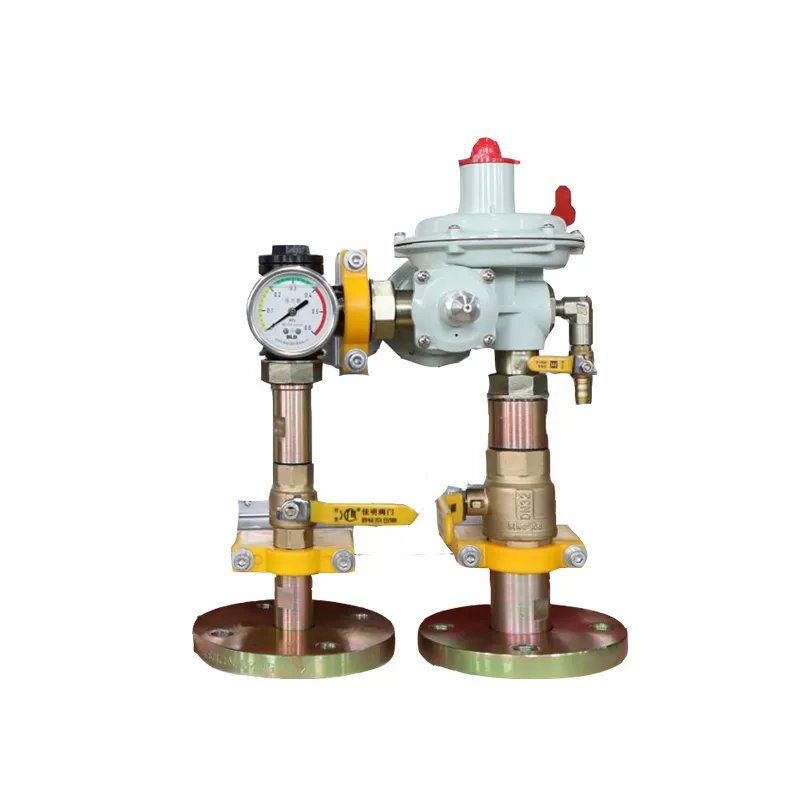
Dec . 06, 2024 03:43
Back to list
Understanding the Functionality and Benefits of Pressure Reducing Valves in Fluid Systems
Understanding Pressure Reducing Valves
Pressure reducing valves (PRVs) are essential components in fluid control systems, used to regulate the pressure of fluids flowing through a pipeline. These valves ensure that the downstream pressure remains within acceptable levels, thereby protecting sensitive equipment and maintaining optimal operational conditions. Whether in residential plumbing, industrial applications, or water distribution systems, PRVs play a crucial role in enhancing efficiency and safety.
At its core, a pressure reducing valve takes high-pressure fluid from a source and reduces it to a lower, preset pressure. This process involves an intricate mechanism that automatically adjusts to fluctuations in pressure, ensuring that the downstream pressure is maintained consistently even if the supply pressure varies. The construction typically includes a valve body, a diaphragm, a spring, and an adjustment screw to set the desired pressure level.
Operating Principle
The operation of a PRV is based on the principles of fluid dynamics and mechanical engineering. When fluid enters the valve at a high pressure, it encounters a diaphragm that is held in place by a spring. The spring's tension can be adjusted via the adjustment screw, which determines the valve's outlet pressure. When the downstream pressure falls below the preset level, the diaphragm moves downward, allowing more fluid to flow through. Conversely, if the downstream pressure exceeds the set point, the diaphragm moves upward, throttling the flow of fluid.
This responsive mechanism is vital in preventing situations that could lead to equipment damage or complete system failure. For instance, in a domestic water supply system, a PRV can help manage pressure fluctuations that might lead to pipe bursts or leaks. In industrial scenarios, they protect sophisticated machinery that operates optimally at specified pressure levels, thereby prolonging equipment lifespan and reducing maintenance costs.
Applications and Benefits
The applications of pressure reducing valves are extensive. In residential settings, they are commonly installed on the main water supply line to ensure that the water pressure remains within a safe range for plumbing fixtures. In irrigation systems, PRVs help deliver water at consistent, manageable pressures, promoting efficient water usage and preventing damage to irrigation components.
pressure reducing valve

In industrial applications, pressure reducing valves are critical in steam systems, gas pipelines, and hydraulic systems, where maintaining precise pressure parameters is paramount for safety and functionality. By reducing or maintaining pressure, these valves can significantly enhance the operational efficiency of various processes, ultimately leading to cost savings.
Moreover, PRVs can also reduce energy consumption. By reducing pressure to required levels, less energy is expended in pumping fluids, leading to lower utility bills and a reduced carbon footprint. As industries move towards sustainability, the role of PRVs becomes increasingly significant in energy management strategies.
Choosing the Right PRV
Selecting the appropriate pressure reducing valve involves considering various factors, including the type of fluid being controlled, the desired outlet pressure, the flow rate, and the specific application requirements. Additionally, materials and construction quality are crucial for ensuring durability and reliability, especially in harsh operational environments.
Proper installation and maintenance of PRVs are also vital. Regular inspections can help identify wear or potential failure points, ensuring optimal performance. It’s advisable to work with experienced professionals when selecting and installing these systems to ensure they're tailored to the specific needs of the application.
Conclusion
In summary, pressure reducing valves are crucial for maintaining controlled fluid flow in a variety of systems. Their ability to regulate pressure protects equipment, enhances efficiency, and contributes to safety across multiple sectors. By understanding their operation and significance, users can better appreciate the importance of these unsung heroes of fluid control. As we advance towards more efficient and sustainable solutions, integrating well-functioning PRVs into systems will undoubtedly play a pivotal role.
Next:
Latest news
-
Safety Valve Spring-Loaded Design Overpressure ProtectionNewsJul.25,2025
-
Precision Voltage Regulator AC5 Accuracy Grade PerformanceNewsJul.25,2025
-
Natural Gas Pressure Regulating Skid Industrial Pipeline ApplicationsNewsJul.25,2025
-
Natural Gas Filter Stainless Steel Mesh Element DesignNewsJul.25,2025
-
Gas Pressure Regulator Valve Direct-Acting Spring-Loaded DesignNewsJul.25,2025
-
Decompression Equipment Multi-Stage Heat Exchange System DesignNewsJul.25,2025

